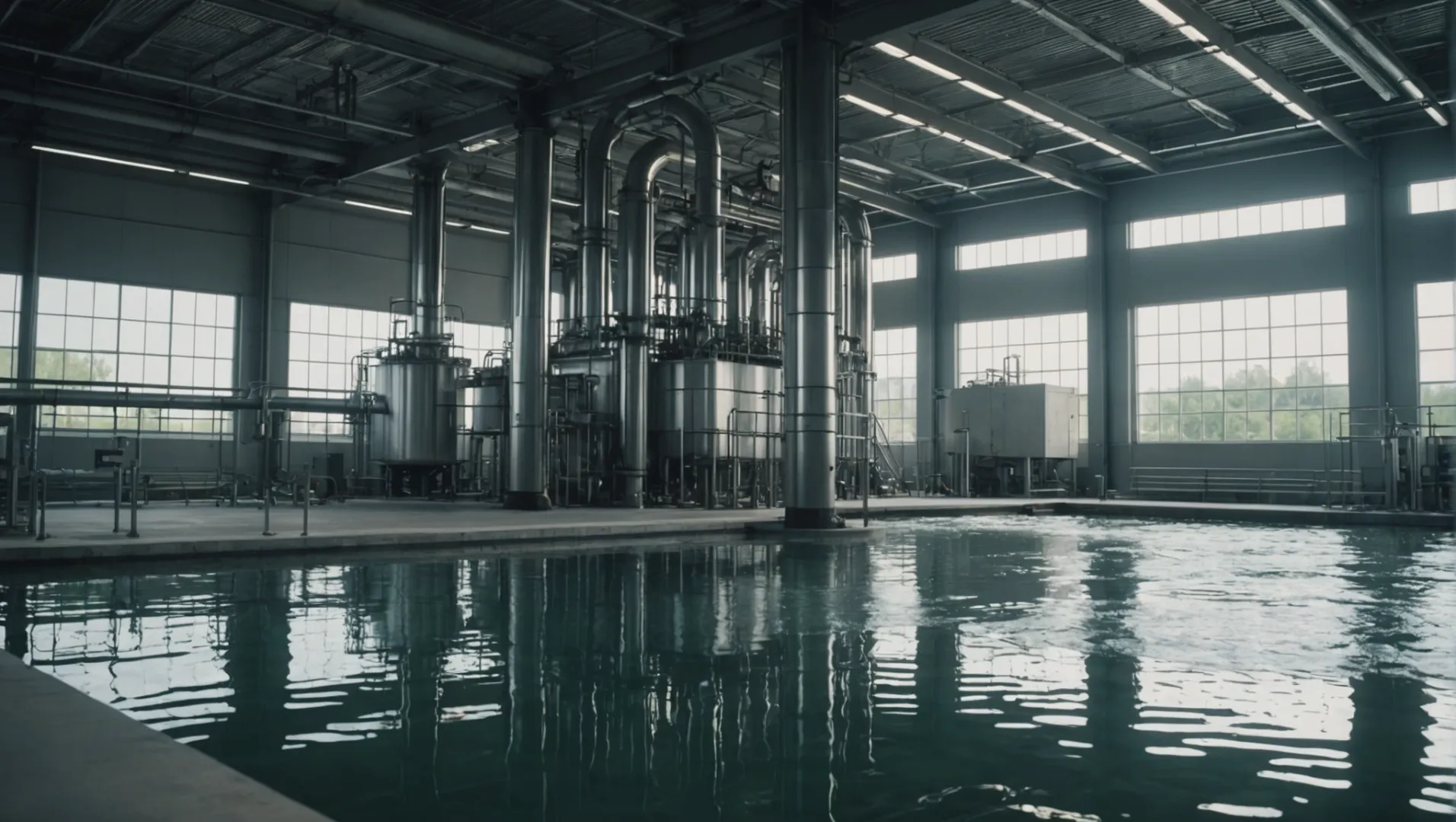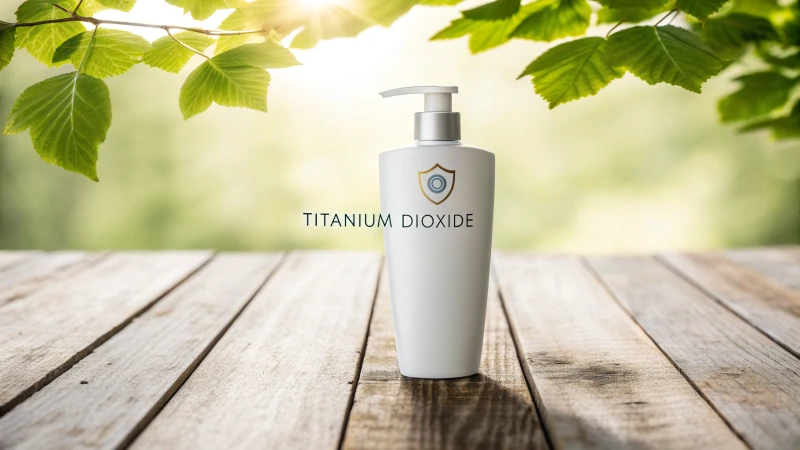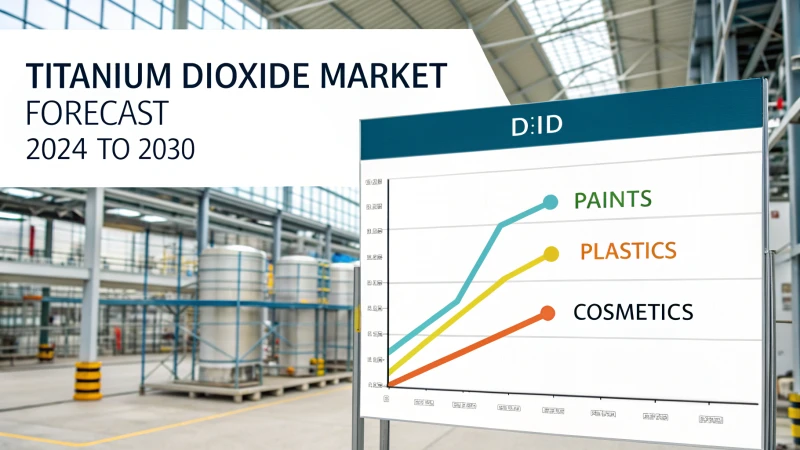
Ever since I learned about titanium dioxide (TiO2), I’ve been fascinated by its role in cleaning our water. It’s not just a pigment; it’s a hero in water treatment!
Titanium dioxide is used in water treatment primarily as a photocatalyst. It utilizes sunlight to generate reactive oxygen species, which oxidize and decompose pollutants in the water, providing an eco-friendly and efficient solution for wastewater remediation.
While TiO2‘s basic function in water treatment is intriguing, delving deeper reveals its comprehensive benefits and potential for future innovations. From enhancing catalyst reusability to producing clean energy, let’s explore why titanium dioxide stands out in modern water treatment technology.
[claim claim=”TiO2 uses sunlight to generate reactive oxygen species.” istrue=”true” explanation=”TiO2 acts as a photocatalyst, using sunlight to produce ROS that decompose pollutants.”]
What Makes Titanium Dioxide an Effective Photocatalyst?
Titanium dioxide’s photocatalytic prowess lies in its ability to harness sunlight to cleanse water.
Titanium dioxide’s effectiveness as a photocatalyst is due to its ability to generate reactive oxygen species (ROS) under sunlight, which can oxidize and decompose organic pollutants. Its environmental friendliness, low cost, and high oxidative strength make it a preferred choice in wastewater treatment.

The Science Behind Titanium Dioxide’s Photocatalytic Activity
Titanium dioxide (TiO2) operates as a photocatalyst by utilizing ultraviolet light from the sun to excite electrons within its structure. This excitation creates electron-hole pairs that generate reactive oxygen species1, such as hydroxyl radicals, which can break down a wide range of organic pollutants into less harmful substances like carbon dioxide and water.
Advantages of Using Titanium Dioxide
- Environmental Friendliness: TiO2 is non-toxic and poses minimal environmental risks, making it an attractive option for green chemistry applications.
- Cost-Effectiveness: Its abundance and low production cost enhance its appeal for large-scale industrial applications.
- Robust Oxidative Properties: TiO2‘s strong oxidative capabilities ensure effective degradation of even stubborn pollutants.
Enhancing Titanium Dioxide’s Photocatalytic Efficiency
Combining TiO2 with superparamagnetic nanoparticles like iron oxide can significantly improve its efficiency. This hybrid approach not only enhances the reusability of the catalyst but also aids in its easy recovery post-treatment. This combination can be particularly beneficial in removing dissolved carbonaceous wastes and preventing electron-hole recombination, a common issue that reduces photocatalytic efficiency.
Practical Applications in Water Treatment
Table: Potential Applications of TiO2 in Water Treatment
| Application Type | Benefits |
|---|---|
| Industrial Wastewater | Breaks down complex organic compounds |
| Urban Wastewater | Reduces chemical oxygen demand (COD) |
| Drinking Water Purification | Removes trace organic contaminants |
These applications demonstrate the versatility and effectiveness of TiO2 in various water treatment scenarios, making it a valuable asset in achieving cleaner water solutions globally.
Future Prospects
While the current understanding of TiO2‘s photocatalytic properties is advanced, ongoing research aims to further optimize its performance. Innovations such as doping with metal ions or coupling with other semiconductors could unlock even greater efficiencies, paving the way for more sustainable and effective water purification systems worldwide.
[claim claim=”Titanium dioxide is non-toxic and environmentally friendly.” istrue=”true” explanation=”TiO2 is considered safe and poses minimal environmental risks.”]
[claim claim=”Combining TiO2 with iron oxide reduces its photocatalytic efficiency.” istrue=”false” explanation=”Iron oxide enhances TiO2 efficiency by preventing electron-hole recombination.”]
How Does TiO2 Compare to Traditional Water Treatment Methods?
Exploring the benefits of TiO2 over conventional methods reveals surprising insights.
Titanium dioxide offers a more sustainable, efficient, and eco-friendly alternative to traditional water treatment methods by utilizing photocatalysis to break down pollutants without harmful chemical residues.

The Basics of Traditional Water Treatment
Traditional water treatment methods often involve several stages such as coagulation, flocculation, sedimentation, filtration, and disinfection. These steps are effective but rely heavily on chemical agents like chlorine, which can have negative environmental and health impacts.
Advantages of TiO2 in Water Treatment
1. Environmental Impact
Unlike chemical treatments, titanium dioxide2 uses sunlight to create reactive oxygen species (ROS) that decompose pollutants without leaving harmful residues. This makes it a more environmentally friendly option.
2. Energy Efficiency
TiO2‘s photocatalytic process harnesses solar energy, significantly reducing the need for external energy sources. In contrast, traditional methods require extensive energy inputs for chemical production and operation.
| Parameter | Traditional Methods | TiO2 Photocatalysis |
|---|---|---|
| Chemical Usage | High | Low |
| Energy Source | External | Solar |
| Residue | Chemical By-products | Water, CO2 |
3. Cost-Effectiveness
While initial setup costs for TiO2 systems can be high, the ongoing operational costs are lower due to reduced energy and chemical use. This contrasts with the recurring expenses associated with traditional chemical-based treatments.
Integration with Advanced Technologies
The effectiveness of TiO2 can be enhanced by combining it with superparamagnetic nanoparticles like iron oxide, which improve its reusability and recovery. This integration is not commonly found in traditional methods but represents a significant advancement in water treatment technology.
Challenges and Considerations
Although promising, the use of TiO2 in water treatment is not without challenges. Scaling up from laboratory settings to large-scale treatment plants requires further research and development to ensure consistent performance and economic viability. Additionally, understanding the full lifecycle environmental impact remains crucial to its adoption.
Conclusion: A Paradigm Shift?
While TiO2 offers many advantages over traditional methods, widespread adoption will depend on overcoming current challenges through continued innovation and investment in research. The potential for cleaner water and energy-efficient solutions is undeniable, marking a possible paradigm shift in how we approach water treatment.
[claim claim=”TiO2 leaves harmful chemical residues.” istrue=”false” explanation=”TiO2 decomposes pollutants without leaving harmful residues.”]
[claim claim=”Traditional methods rely on solar energy.” istrue=”false” explanation=”Traditional methods require external energy sources, not solar.”]
Can Titanium Dioxide Be Used in Large-Scale Water Treatment Plants?
Titanium dioxide’s potential in large-scale water treatment is captivating, but is it feasible today?
While titanium dioxide shows promise for large-scale water treatment, challenges like scalability, cost, and efficiency remain. Further research is essential to overcome these obstacles and harness its full potential in industrial applications.

Understanding Titanium Dioxide’s Role in Large-Scale Applications
Titanium dioxide (TiO2) has gained attention for its effectiveness in photocatalytic processes, which leverage sunlight to generate reactive oxygen species. These species help oxidize and decompose pollutants, making TiO2 an attractive option for water purification. But can this process scale up to meet the demands of large-scale water treatment plants?
One significant advantage of TiO2 is its ability to work efficiently under sunlight, reducing energy costs. Additionally, the coupling of TiO2 with superparamagnetic nanoparticles, such as iron oxide, enhances the catalyst’s reusability and recoverability. This property is particularly beneficial in large-scale settings where ongoing operations necessitate sustainable and cost-effective solutions.
Challenges in Implementing TiO2 at Scale
Despite its advantages, several challenges impede the widespread adoption of TiO2 in large-scale water treatment. Scalability is a primary concern, as the current technology primarily suits small-scale operations or laboratory settings.
The cost of synthesizing high-quality TiO2 nanoparticles can also be prohibitive. While TiO2 itself is relatively inexpensive, the associated costs of combining it with other materials to enhance performance may increase overall expenses.
Moreover, the efficiency of photocatalysis using TiO2 can be hindered by several factors. For example, the recombination of electron-hole pairs generated during the process can reduce its effectiveness. Researchers are actively exploring ways to mitigate this through innovations like combining TiO2 with carbonaceous waste to prevent recombination while simultaneously producing hydrogen energy production with TiO23.
Future Prospects and Innovations
To truly realize TiO2‘s potential in large-scale water treatment plants, ongoing research and innovation are crucial. Future developments may focus on optimizing the synthesis process to reduce costs while enhancing catalytic efficiency.
Moreover, integrating TiO2-based systems with existing water treatment infrastructure may offer a more feasible path forward. Hybrid systems that combine traditional methods with advanced photocatalysis could bridge the gap between current capabilities and future needs.
The global research community continues to explore these possibilities, pushing the boundaries of what TiO2 can achieve in industrial settings innovations in photocatalysis4. As such technologies advance, the hope is that TiO2 will become a cornerstone of sustainable water purification practices worldwide.
[claim claim=”TiO2 is currently scalable for large water treatment plants.” istrue=”false” explanation=”Scalability remains a major challenge for TiO2 in large-scale applications.”]
[claim claim=”TiO2 reduces energy costs by using sunlight in water treatment.” istrue=”true” explanation=”TiO2’s photocatalytic process utilizes sunlight, lowering energy expenses.”]
What Are the Challenges and Future Prospects of Using TiO2 in Water Treatment?
As the quest for sustainable water treatment solutions intensifies, titanium dioxide emerges as a promising contender.
The main challenges of using TiO2 in water treatment include its limited efficiency under visible light and issues with catalyst recovery. However, advancements in modifying TiO2 for better solar absorption and integrating it with magnetic nanoparticles promise to overcome these barriers, paving the way for more sustainable water purification processes.

Current Challenges in TiO2 Application
Titanium dioxide (TiO2) is lauded for its potential to revolutionize water treatment, yet several challenges hinder its widespread adoption. A key issue is its dependency on ultraviolet (UV) light for activation, which limits efficiency under visible sunlight. Efforts to overcome this include doping TiO2 with metals or non-metals to extend its light absorption range. Additionally, the recovery of TiO2 post-treatment poses practical difficulties. Once dispersed in water, retrieving these nanoparticles without losing their catalytic activity is challenging and often requires complex processes.
Moreover, the risk of nanoparticle leaching into treated water raises environmental and health concerns. This necessitates stringent protocols to ensure safety in real-world applications.
Future Prospects for TiO2 in Water Treatment
Despite these challenges, research continues to unveil promising prospects. Enhancing Photocatalytic Efficiency: Innovative strategies such as coupling TiO2 with other semiconductors or using carbon-based materials like graphene are being explored to boost its photocatalytic efficiency under visible light. This approach not only improves pollutant degradation but also enhances the durability of the catalyst.
Integration with Magnetic Nanoparticles: Incorporating superparamagnetic nanoparticles, such as iron oxide, into TiO2 systems holds significant promise. This integration facilitates easy recovery through magnetic separation, thus addressing one of the primary challenges of nanoparticle usage.
| Modification Technique | Benefits |
|---|---|
| Metal/Non-metal Doping | Extends light absorption into the visible range |
| Graphene Coupling | Enhances electron transport and stability |
| Magnetic Integration | Simplifies catalyst recovery |
Energy Production Potential: A fascinating avenue is the dual functionality of TiO2 systems that not only purify water but also generate hydrogen gas through water splitting. This could revolutionize how we approach energy and water management simultaneously.
The continuous development of photocatalytic technologies5 promises an exciting future where TiO2 plays a pivotal role in achieving sustainable and efficient water treatment solutions.
[claim claim=”TiO2 requires UV light for activation in water treatment.” istrue=”true” explanation=”TiO2 primarily activates under UV light, limiting its efficiency.”]
[claim claim=”Graphene coupling reduces TiO2’s photocatalytic efficiency.” istrue=”false” explanation=”Graphene coupling enhances TiO2’s electron transport and stability.”]
Conclusion
In conclusion, titanium dioxide offers a sustainable and innovative approach to water treatment. By harnessing sunlight, it effectively purifies water while potentially generating energy. Embrace this technology’s promise as we strive for cleaner and greener solutions.
-
Learn how TiO2 produces ROS to break down pollutants.: Nano-TiO2 has been reported to be an efficient photocatalyst, which is able to produce reactive oxygen species (ROS) under UVA irradiation. ↩
-
Learn how TiO2 effectively decomposes pollutants in water treatment.: Several researchers have depicted that TiO2 doping with non-metal ions improve photocatalytic efficiency compared to metals. Doping with cations changes the … ↩
-
Explore how TiO2 aids hydrogen production during water purification.: For the production of H2, gold as a dopant over a TiO2 semiconductor can be selected as a catalyst in photocatalysis. The rate of H2 production … ↩
-
Discover cutting-edge advancements in photocatalytic technology.: Studies have shown that, in order to completely purify dye wastewater by photocatalysis, the focus should be on two aspects: (1) dye enrichment … ↩
-
Explore the forefront innovations enhancing photocatalytic applications in water treatment.: This review briefly discusses the mechanisms, research progress, and problems associated with photocatalysis for wastewater treatment. ↩





